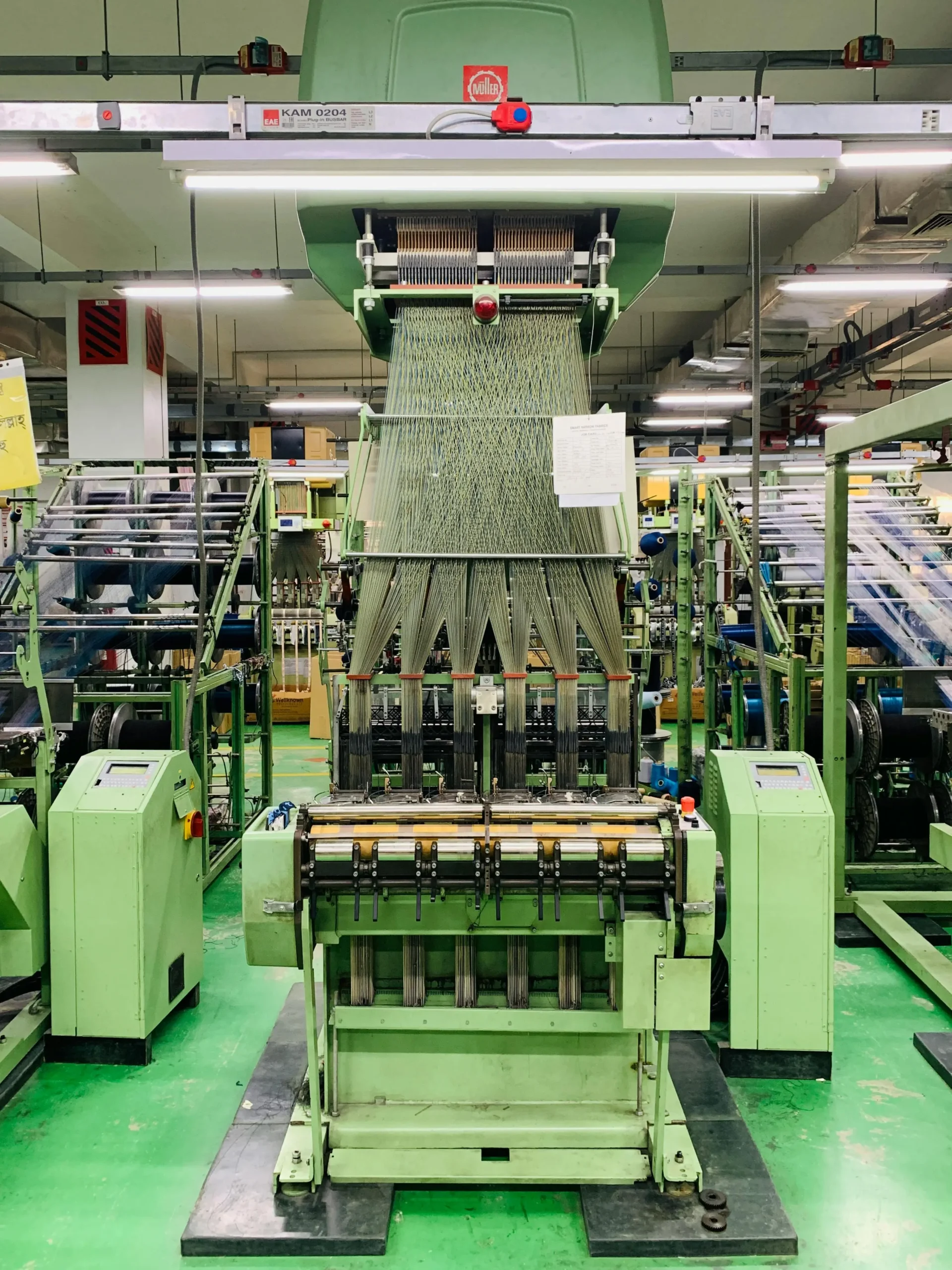The most exquisite materials found in nature are taking center stage in a new era of technology: **The Future of Electronics: How Silk and Graphene are Revolutionizing Technology** Consider a future in which the technology you use is not only smarter but also lighter, more adaptable, and environmentally friendly. Let me introduce you to silk and graphene, two remarkable materials that are completely changing the way we think about electronics. These breakthroughs, which range from incredibly thin screens that can flex like paper to biodegradable parts that ease environmental stress, have the potential to revolutionize a wide range of industries, including consumer electronics and healthcare. Come along on this expedition into the future of electronics, where state-of-the-art research and innate creativity combine to unleash a technological revolution never seen before!
An Introduction to Graphene and Silk
Envision a future in which electronics are both sustainable and efficient. A future where environmental sustainability and technological prowess coexist harmoniously to create strong yet eco-friendly technologies. Here are two amazing materials that have the potential to completely change the electronics industry: silk and graphene.
People have loved silk for thousands of years because of its strength and opulent feel. Conversely, 2004 saw the discovery of graphene, a marvel of contemporary science that is praised for being among the strongest and most conductive materials ever made. When combined, these two components have special qualities that have the potential to change the way we perceive electronics.
Let’s investigate how silk and graphene are reshaping a variety of industries, from healthcare to energy efficiency, as we delve more into this fascinating technological frontier and what it means for our future. Fasten your seatbelts—this voyage promises to be insightful!
– What are they?
Researchers and inventors alike are fascinated by two extraordinary materials: silk and graphene.
Since ancient times, people have prized silk—a naturally occurring protein fabric made by silkworms—for its exquisite texture and durability. Silk has special qualities that make it a great choice for a variety of technological applications; it’s not just about fashion.
In contrast, a single sheet of carbon atoms organized in a hexagonal lattice makes up graphene. Because of its exceptional mechanical strength and electrical conductivity, its discovery in 2004 opened up new possibilities in the field of material science.
Each material has unique benefits that have the potential to transform electronics. Their combination has potential to completely change the way we now view technology. We have only just begun to scratch the surface of what these amazing compounds are capable of as research into their individual potentials continues.
A synopsis of the past and background
The history of silk dates back thousands of years. Its first known cultivation dates back to ancient China, circa 2700 BC. Silk was once only worn by royalty, but it has since come to represent elegance and wealth.
In contrast, graphene is substantially more recent. Scientists from all over the world were immediately interested in this single layer of carbon atoms, which was discovered in 2004 by Andre Geim and Konstantin Novoselov at the University of Manchester.
Each substance has special qualities. Silk is a unique natural fiber because of its strength and elasticity. Graphene exhibits remarkable mechanical resilience along with exceptional electrical conductivity.
These two materials are coming together more frequently in the realms of modern technology as researchers continue to investigate their potential. Their combination may bring about breakthroughs beyond existing knowledge, such as bioelectronics or smart fabrics.
Benefits of Graphene and Silk Use in Electronics
In the electronics industry, silk and graphene are becoming more and more popular due to their exceptional qualities. Their flexibility and low weight make them perfect for high-end applications. Think of wearable technology that fits the body naturally and improves comfort without sacrificing functionality.
Graphene is unique because of its remarkable conductivity. This translates to devices using less energy and transmitting data more quickly. Combined with silk’s remarkable strength, we have a dependable material that is resistant to normal wear and tear.
Their eco-friendliness is a crucial additional benefit. Because silk is biodegradable, it eliminates the problems with conventional materials’ electronic waste. This offers a chance for environmentally friendly and consumer-friendly sustainable technological solutions.
When combined, silk and graphene allow for innovative gadget design without sacrificing sustainability or performance.
Properties that are flexible and lightweight
In the realm of electronics, graphene and silk are revolutionary materials. One of their most notable qualities is how light they are. Because of this feature, developers can make gadgets that don’t burden designs or slow down consumers.
Consider wearable equipment that is nearly weightless. Natural silk threads are comfortable, and the atomic structure of graphene guarantees longevity without being heavy.
This flexibility creates opportunities for product design in a variety of sectors. Applications for wearable technology and health monitoring systems are numerous and diverse.
The combination of silk and graphene creates a seamless integration of appearance and functionality, enabling more intuitive user experiences. As we delve deeper into these qualities, new and intriguing possibilities appear.
Strength and conductivity
Conductivity and strength are being redefined by materials like graphene and silk. Graphene is an extremely electrically conductive single sheet of carbon atoms organized in a two-dimensional lattice. Because of this, it is perfect for a wide range of electronic applications where effective energy transfer is essential.
However, silk is surprisingly strong for its lightweight nature when it comes to tensile strength. Researchers have discovered ways to significantly improve the characteristics of these materials when coupled with graphene.
As a result, flexible electronics with high stress tolerance are produced without sacrificing functionality. Imagine wearables that can smoothly withstand everyday wear and tear in addition to monitoring health data.
The combination of silk and graphene creates a synergy that makes advancements previously unthinkable possible. Today’s developers are pushing the limits of what is currently possible in technology by investigating the usage of these composite materials in anything from enhanced batteries to smart fabrics.
Sustainability and biodegradability
Sustainability and biodegradability are now important factors in modern technology. Silk is a naturally occurring polymer that decomposes readily in the environment. It is obtained from silkworms. Because of its biological beginnings, it won’t produce persistent trash like traditional plastics do.
Even though graphene is not biodegradable, it can be made with little harm to the environment if it is supplied ethically. The exceptional qualities of this material provide answers without endangering our ecosystem.
Sustainable electronics that are not only highly functional but also environmentally friendly are made possible by the use of silk and graphene. Advances in these materials offer hope for a time when technology won’t harm the environment.
Using such materials opens the door to more environmentally friendly decisions that benefit consumers as well as the environment as a whole. As we confront urgent global issues like waste and resource depletion, the transition to green technology is imperative.
The Present Uses of Graphene and Silk in Technology
Graphene and silk are already causing a stir in a number of IT industries. Silk-based biosensors enable accurate vital sign monitoring in the medical field. These pliable gadgets are comfortable to wear on the skin without sacrificing performance.
Creative designers employ textiles laced with graphene to create clothes that are durable and stylish. What was the outcome? apparel that is not just durable but also light-weight over time.
There is also a change in the energy industry. Compared to conventional choices, graphene-enhanced batteries provide faster charging times and longer lifespans. This development may completely change the way we power our electronics.
Furthermore, silk is perfect for usage in implantable medical devices due to its biocompatibility. Its inherent qualities help the body mechanically and aid in healing.
In today’s technological context, these applications represent only a small portion of what silk and graphene are capable of.
Products that make use of these materials
Graphene and silk are gaining popularity in a number of industries. Their special qualities have sparked hitherto unthinkable creative applications.
Researchers are creating smart bandages for use in healthcare that are laced with graphene oxide and silk proteins. Real-time wound monitoring is possible with these sophisticated dressings, greatly enhancing patient care.
There is a shift happening in fashion as well. Designers are using graphene into clothing to improve moisture management and durability. Imagine wearing clothes that adjusts to your body temperature in addition to looking great!
Graphene electrodes paired with silk-based batteries provide advantageous energy storage methods. Combining these two results in lighter, more effective solutions that are perfect for electric cars and smartphones alike.
Consumer electronics have also joined the bandwagon! These materials promise better sound quality and to be extremely lightweight and comfortable to wear, thus some businesses are investigating the possibility of producing headphones made of them. As more sectors come to appreciate the synergy between graphene and silk, the possibilities appear to be unlimited.
Effects on the energy, fashion, and healthcare sectors
Graphene and silk are causing quite a stir in a lot of industries, especially the medical field. Their biocompatibility makes way for cutting-edge medical technology. Smart bandages have special qualities that allow them to monitor wounds and aid in healing.
These materials are redefining wearable technology in the fashion world. Imagine wearing apparel that is seamlessly woven into the fabric to track health parameters or adjust to variations in temperature. Blends of silk and graphene are being used more often by designers to create clothing that is both practical and fashionable.
There are changes occurring in the energy sector as well. Because of graphene’s remarkable conductivity, batteries and solar cells may operate more effectively. This might result in more portable power sources that are lightweight without compromising on functionality.
These sectors show that graphene and silk are more than simply fads; they signify a move toward more intelligent, environmentally friendly technologies that meet contemporary demands.
Advancements in the Domain
The recent progress made in the study of graphene and silk is quite amazing. In order for electronics to reach its full potential, researchers are pushing the envelope. Developing cutting-edge sensors that take advantage of these materials’ special qualities is one fascinating topic.
Wearable technology is incorporating graphene, a material with remarkable conductivity. This makes room for health monitors that offer data in real time without compromising comfort or adaptability. Think about a smart band that changes to suit your body’s needs!
Additionally, the inherent biocompatibility of silk has sparked ground-breaking advancements in medical technology. Consider silk-fiber-based bioelectronic interfaces that can smoothly interact with human tissue while providing both performance and security.
Furthermore, industry collaboration has sparked fresh concepts for silk-graphene composite energy storage technologies. Researchers believe that faster charging and longer-lasting batteries are not too far off—all because of these novel materials.
Most recent advancements and discoveries in research
Novel directions for electrical applications are being opened by recent developments in the research of graphene and silk. These materials have been successfully mixed by researchers to produce hybrid devices with improved performance.
For example, an MIT team has used a silk-graphene composite to create a flexible display. This invention is lightweight, durable under stress, and maintains good conductivity. Imagine bending screens without sacrificing their ability to function.
These advancements only hint at what may be feasible as further research comes to light, stretching the limits of electronics into previously uncharted territory in terms of effectiveness and versatility. As research into the various ways these two extraordinary materials might revolutionize technology continues, the future appears bright.
– Possible uses in the future
Silk and graphene have a plethora of fascinating potential uses in electronics in the future. Imagine being able to wear wearable technology that is as light as a feather and can adjust to your body temperature. This has the potential to redefine smart clothing’s functionality and comfort.
Energy storage is another field that shows promise. Because of graphene’s remarkable conductivity, supercapacitors—which charge and discharge more quickly than traditional batteries—may one day be developed. An innovative approach to electric cars, huh?
Bioelectronics created from these materials may provide sophisticated monitoring systems in the medical field. They would be sufficiently adaptable to blend in with human skin in a seamless manner, enabling real-time health tracking without compromising comfort.
Combining graphene’s capabilities with those of silk could even open the door to computers by creating incredibly thin circuits that can process data at previously unheard-of rates. When scientists continue to investigate the potential of this dynamic combination in a variety of fields, the possibilities really do appear endless.

Obstacles and Restrictions
Although graphene and silk have great potential, obstacles still stand in the way of their widespread use. Among the major obstacles is cost-effectiveness. Both materials are more expensive to produce under certain conditions, which limits their availability for mass-market devices.
The ability to scale is another challenge. It is still very difficult to find ways to make these materials in big quantities without sacrificing quality. Maintaining the intended qualities when producing in large quantities is a common challenge for manufacturers.
A unique set of problems arises with integration. Conventional materials like silicon or copper are the foundation of most existing technologies. The integration of silk and graphene into existing platforms would need significant redesigns, which could cause a delay in the pace of innovation.
– Economical
The broad use of graphene and silk technologies is greatly influenced by cost-effectiveness. Although these materials have several advantages, their initial production costs may be substantial.
When manufactured sustainably, silk—which comes from nature—is frequently less expensive than synthetic substitutes. Its production processes are changing, which could result in lower costs.
Graphene poses a distinct difficulty. Even with its many uses and great qualities, scaling up manufacturing is still expensive. Scholars are investigating novel methodologies to enhance accessibility without compromising on quality.
As the market for flexible and lightweight electronics expands, producers need to figure out how to strike a compromise between cost and functionality. Cost-cutting innovations may open the door to wider application across a range of industries.
The impact of these sophisticated materials on consumer products and future technologies will ultimately depend on how economically feasible they are made to be.
– Scalability of production
One major obstacle to the integration of silk and graphene in electronics is still production scalability. Although these materials have amazing qualities, it is difficult to produce them on a wide scale.
The natural procedures that include silkworms in the manufacture of silk can have an output limit. The lengthy and labor-intensive process of harvesting silk reduces its availability for industrial uses.
Even though graphene is produced from graphite, mass production techniques provide challenges for the material. While promising, methods such as chemical vapor deposition are now too costly and unsuitable for general application.
These innovations need to find a way to balance quantity and quality in order to be viable in consumer markets. Scientists are working to improve synthesis methods that could expedite this procedure without compromising material purity.
The potential of silk and graphene will remain somewhat limited inside specialized applications rather than mainstream technology until scalable solutions appear.
Compatibility with current technology
Combining graphene and silk into current technology offers both formidable obstacles and fascinating opportunities. It is important to carefully analyze how well these materials work with modern electronic components.
Manufacturers must, for example, figure out how to combine the special qualities of silk and graphene with conventional silicon-based systems in a smooth manner. In addition to material science, this calls for engineering techniques that can be modified to accommodate novel fabrication techniques.
Furthermore, it is essential to train experts to work with such cutting-edge materials. To properly accommodate the integration process, it could be necessary to make adjustments to the current manufacturing lines or even to completely revamp them.
The Effects of Graphene and Silk on the Environment
Particularly when contrasted with traditional materials, the environmental advantages of silk and graphene are particularly noteworthy. Natural protein fibers like silk eventually biodegrade. In landfills, this feature lessens long-term waste.
Despite being created from graphite, graphene exhibits a remarkable sustainability profile. It is possible to control its production to reduce toxic byproducts. It extends the life and efficiency of electronic gadgets when integrated.
Both materials have a lesser ecological footprint during manufacturing, in contrast to many modern plastics. Utilizing sustainable resources, such as silk, encourages environmentally beneficial inventions.
When these two components are combined, electronics may become more environmentally friendly while also performing better. Greener technology may cause major changes in the industry landscape as more businesses adopt these sustainable practices.
– Contrast
For both manufacturers and users, the effects of electronics on the environment are a major concern. The benefits become clear when we contrast silk and graphene with conventional electrical materials.
Natural and biodegradable, silk is made responsibly from silkworms. When grown appropriately, its ecological impact is negligible. Conversely, graphene, which is made from graphite, is very versatile but needs to be managed carefully during manufacture to reduce waste.
Conventional materials frequently contain toxic chemicals and non-biodegradable parts that worsen pollution. Conversely, silk’s organic properties make it a desirable option for environmentally aware businesses looking to lower their carbon footprints.
Graphene is a material with remarkable strength-to-weight ratios and conductivity. This implies that durability and performance may be maintained when designing smaller devices. Additionally, the lightweight feature results in energy savings during the transit process.

